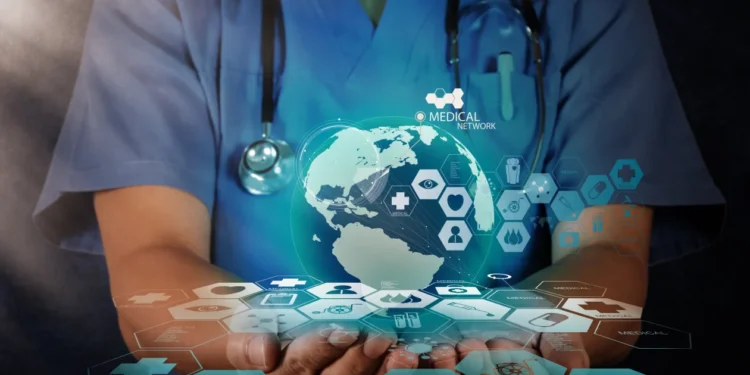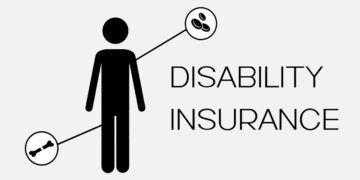Technology has revolutionized how we think about healthcare–from how much it costs to integrating new technologies. As a result, technology has become an integral part of our lives, and the medical field is no exception.
Patients receive more information and are more involved in their care, which results in better care overall. This article will outline the importance of technology in today’s medical field and its impact on patients’ perceptions of the healthcare industry.
Let’s look at how technology changes how patients view the healthcare system.
The importance of technology in today’s medical field

There are three main points to the extent of technology in the healthcare industry.
- Efficiency
- Cost reduction
- Data and trends
But these three aren’t the only things changing how patients view healthcare. These are the driving factors for adaptation to technology. But, of course, the invention that started these technology trends was the Internet.
Efficiency is the first point. Patients can communicate with their doctor or care team more effectively and get timely responses with technology. Timely communication means less time waiting for an answer which is critical in some cases. Additionally, features like scheduling and accessing information improve efficiency, according to digitalauthority.me..
The second point is cost reduction. Different studies have shown that technology implementation in healthcare saves billions of dollars each year. Therefore, allocate healthcare to other areas, and patients don’t have to bear the brunt of high healthcare costs.
The third point is data and trends. With technology, we can now track patient data better than ever before. This data helps doctors and care teams decide treatments, therapies, and medications. In addition, this data collection facilitates longer life expectancy new cures and improves future treatment.
How has technology changed patients’ perceptions of the healthcare system?
Technology has changed the way patients interact with the healthcare system. Patients can now get more information, be more involved in their care, and access medical advice and tips from experts anywhere.
Patients can communicate with their doctor or care team more effectively than ever before. They can also view their medical records online, schedule appointments, and refill prescriptions without having to call or visit the doctor’s office. That means patients have a more optimistic view of their healthcare provider.
In addition, thanks to technology, patients are no longer at the mercy of the healthcare system. They can take an active role in their care and manage their health conditions better than ever before. This increased involvement leads to a higher life expectancy, among other positive trends.
More information and more involvement = better care

Essentially, the communication aspect of technology is the driving force to better care. The more information patients have, the better care they can receive. In addition, the more involved patients are in their care, the better off they are. That added information and involvement change the perspective of patients.
For instance, more informed patients make fewer trips to the doctor’s office and require less medication. They also tend to be more self-aware, leading to healthier lifestyles.
Not only are patients affected, but doctors are too. When doctors receive a more holistic view of a patient, they can understand the patient more effectively. That leads to better care.
In addition, patients who are more involved in their care are more likely to adhere to their doctor’s recommendations. They’re also less likely to experience mental problems like anxiety and depression.
Technology makes healthcare more accessible
Attribute the improvement of healthcare accessibility to lower costs, better communication, and increased patient involvement. For example, patients can now access medical care from anywhere in the world. They no longer have to go to a physical doctor’s office. This accessibility is thanks to the rise of telemedicine.
Telemedicine allows patients to connect with a doctor or specialist online for a consultation. This option is an excellent choice for people who live in rural areas or don’t have easy access to healthcare.
In addition, patients can now get more affordable care through technology. For example, they can purchase health insurance plans online and compare costs between different providers. They can also find cheaper prescription drugs and order them online.
The future of technology in healthcare

The future of technology in healthcare is exciting. So many innovations are changing the way we think about healthcare. For example, there is a growing trend towards using artificial intelligence (AI) in healthcare. AI can diagnose diseases, recommend treatments, and even provide customer service for patients.
Technology can create personalized health plans for patients. These plans use data from a patient’s medical records and other sources to create a unique care plan.
We can expect to see more technological advances that will improve healthcare quality in the future. As a result, patients will have access to more affordable care, better communication, and improved access to medical services.
Healthcare uses blockchain technology because it creates secure, tamper-proof medical records. As a result, blockchain technology revolutionizes the way we think about healthcare data security.
Other potential future technologies in healthcare include:
- Virtual Reality: VR technology can create realistic, immersive environments for medical training. Additionally, VR could aid patients’ recovery from injuries or surgeries.
- Augmented Reality: AR technology can provide real-time patient condition information. For example, it can overlay MRI scans onto the patient’s body.
- 3D Printing: 3D printing technology can create customized medical implants, prostheses, and print medication.
Final Thoughts
We’ve come a long way in the world of technology, and nowhere is that more evident than in the field of healthcare. From patient portals to telemedicine, technology has changed the way patients think about and interact with healthcare.
This article, we’ve looked at how technology changes how patients access care and what they expect from their doctors. We’ve also seen how technology is helping doctors provide better care for their patients.
As technology evolves, we can only imagine the innovations in healthcare. So what do you see as the future of technology in healthcare? Will our exponential growth of knowledge and treatments continue?












